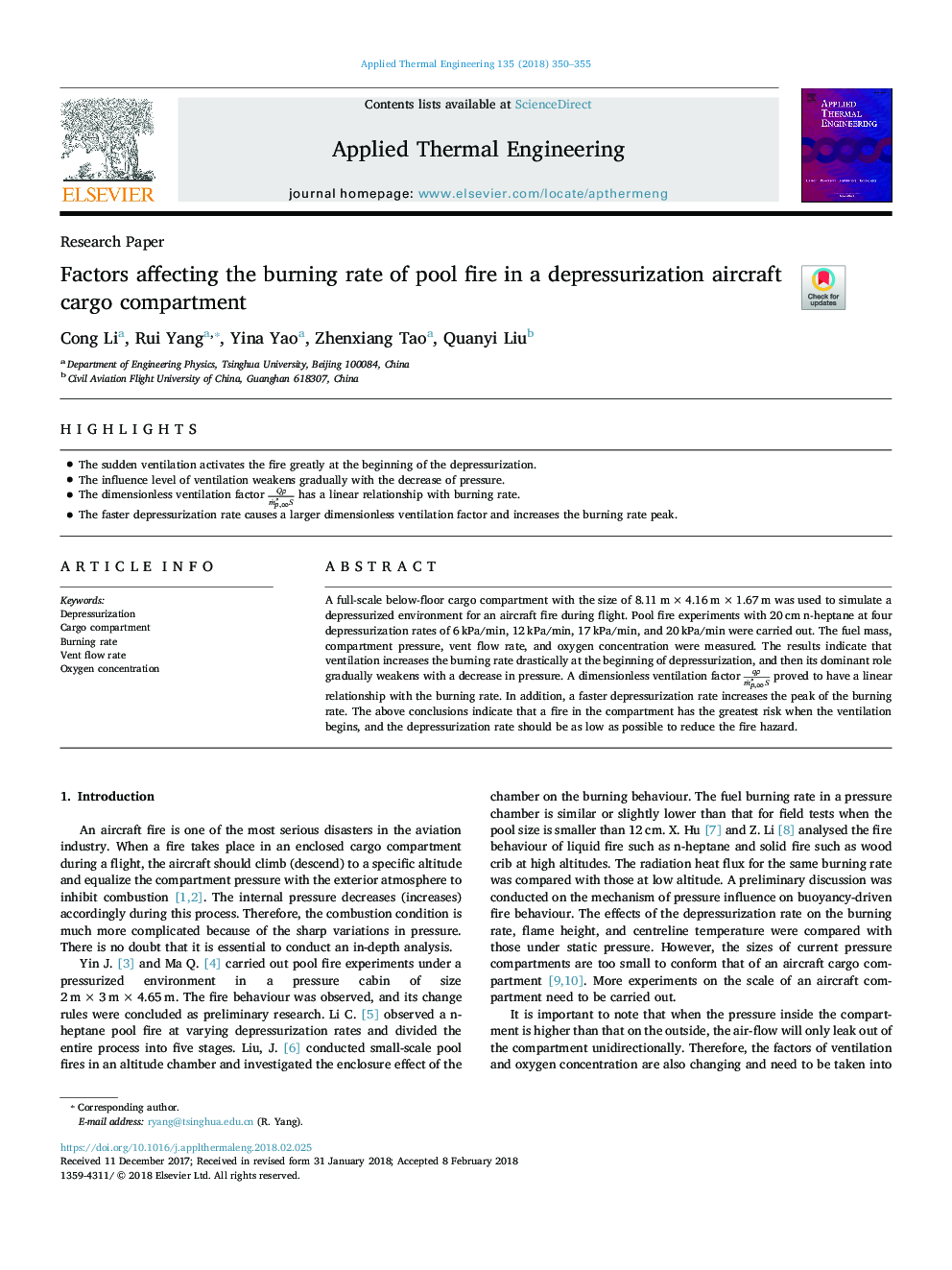| Article ID | Journal | Published Year | Pages | File Type |
|---|---|---|---|---|
| 7045728 | Applied Thermal Engineering | 2018 | 6 Pages |
Abstract
A full-scale below-floor cargo compartment with the size of 8.11â¯mâ¯Ãâ¯4.16â¯mâ¯Ãâ¯1.67â¯m was used to simulate a depressurized environment for an aircraft fire during flight. Pool fire experiments with 20â¯cm n-heptane at four depressurization rates of 6â¯kPa/min, 12â¯kPa/min, 17â¯kPa/min, and 20â¯kPa/min were carried out. The fuel mass, compartment pressure, vent flow rate, and oxygen concentration were measured. The results indicate that ventilation increases the burning rate drastically at the beginning of depressurization, and then its dominant role gradually weakens with a decrease in pressure. A dimensionless ventilation factor qÏmÌp,ââ³S proved to have a linear relationship with the burning rate. In addition, a faster depressurization rate increases the peak of the burning rate. The above conclusions indicate that a fire in the compartment has the greatest risk when the ventilation begins, and the depressurization rate should be as low as possible to reduce the fire hazard.
Related Topics
Physical Sciences and Engineering
Chemical Engineering
Fluid Flow and Transfer Processes
Authors
Cong Li, Rui Yang, Yina Yao, Zhenxiang Tao, Quanyi Liu,
